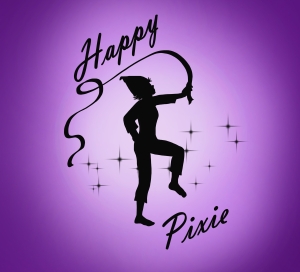The word 'pyrography' translates from the Greek words 'pur' (fire) and 'graphos' (writing), and so is essentially 'writing with fire'.
Traditionally, anything that gets hot and can leave a mark could be used to 'write with fire', from a glowing stick to a red hot poker, but nowadays you can buy different commercially produced electric tools to leave precision marks on your chosen material.
At the time of writing this (March 2020) I consider myself to be a novice with pyrography and am still experimenting with different tools and materials to see which I prefer. I started off with a solid point burner, shown in the picture below.
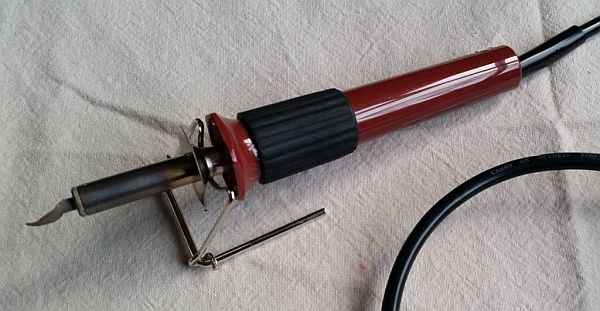
This came with a selection of nibs for different techniques and purposes. The interchangeable nibs from my pyrography tool are shown here.
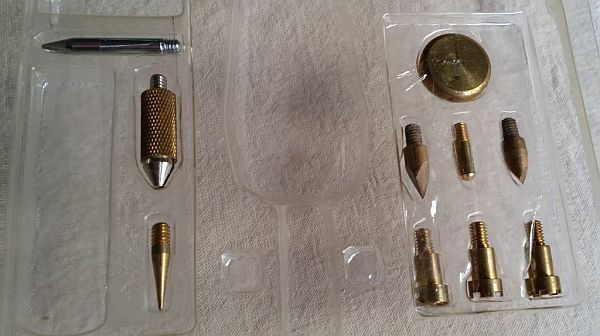
I purchased this pyrography tool many years ago. It's a bit like a soldering iron. There are many to be found that vary in expense but this type seems to be the cheaper option. When researching this type of burner I found one problem that kept coming up was that the nibs have a tendency to bend. If you press too hard on the nibs then they can bend as hot metal is malleable and bends when hot. The answer to this is simple...don't press harder if you want a darker line! This kind of burner has the disadvantage that you are not able to adjust the temperature of the tool. You need to move the tool slower in a steady motion with a slow, even pressure so that it has time to burn deeper/darker. Either that or go over the same line several times but this is harder as you need a very steady hand to make sure you move the tool in exactly the same place.
The other problem that was highlighted was that the thread for changing the nibs often broke. The problem with the thread breaking appears to have happened because people have tried to change the nibs while they were still hot. Always wait until the nib has cooled before changing it for another one. I have never experienced either of these problems with my burner and so hopefully if you take a bit of care and have patience then you might not have these problems with it either.
This kind of burner does have the disadvantage that it takes a long time to warm up and to cool down again. It is frustrating waiting when you want to get on to the next bit but is much better for the longevity of the tool to wait until it's cooled before trying to change the nib. Take a break and go and get a drink or a snack. It's easy to forget these things when you're so busy crafting! It's also safer to wait until it has cooled so you don't end up burning your hands!
My newer and more preferred pyrography tool is a wire nib burner. Mine is shown in the pictures below.
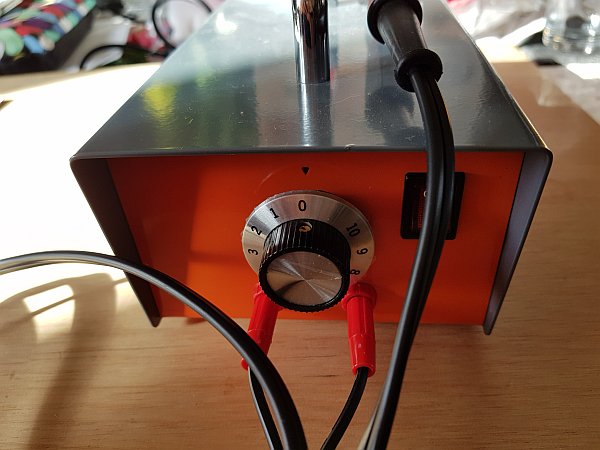
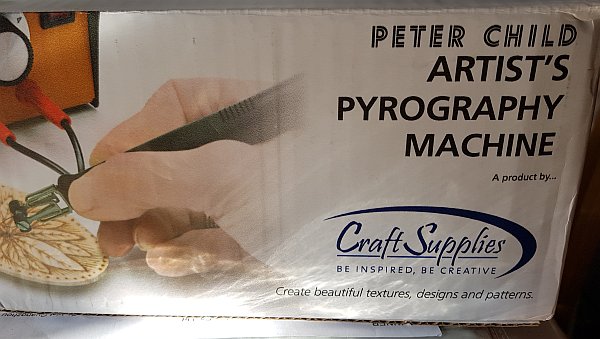
The hand tool plugs in to the front of the power supply and neatly clips onto the top when not in use.
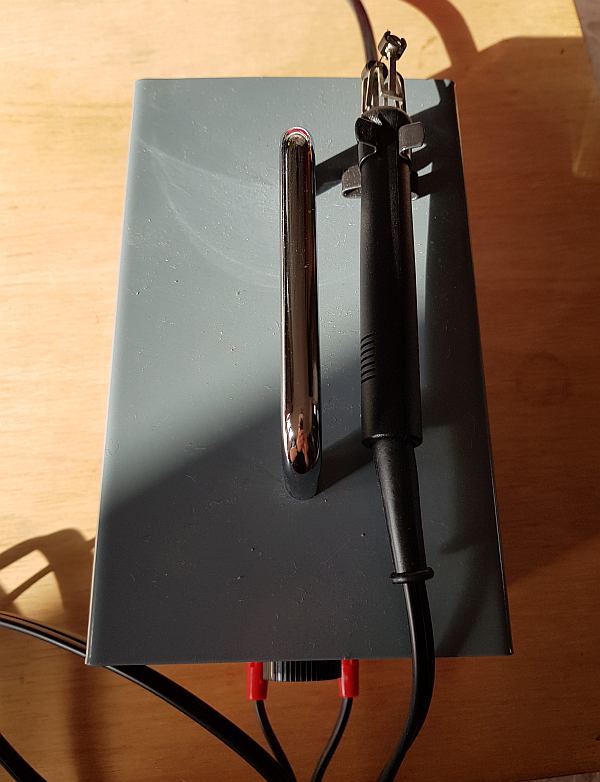
It has an adjustable temperature and it heats up much faster than the solid point burner and cools down much quicker too. The whole machine is bulkier and takes up more space than the solid point burner and is a lot more expensive to buy but I find that it is worth it for all the other benefits that the machine has. Having said that, the nibs are a lot more delicate and break easier and are also slightly more fiddly to change than the solid point burner. It's all dependent on your personal preference and budget as to which tool you might prefer.
This burner burns wood more quickly and works better on hard woods. I have found that I can burn more precise delicate designs with more fine detail a lot easier with this tool due to being able to adjust the temperature. I have a lot more control over the burner and the effects that I can create with it. I'm really happy that I decided to 'splash out' and try this type of burner because it's so much easier to use and a pleasure to work with!
